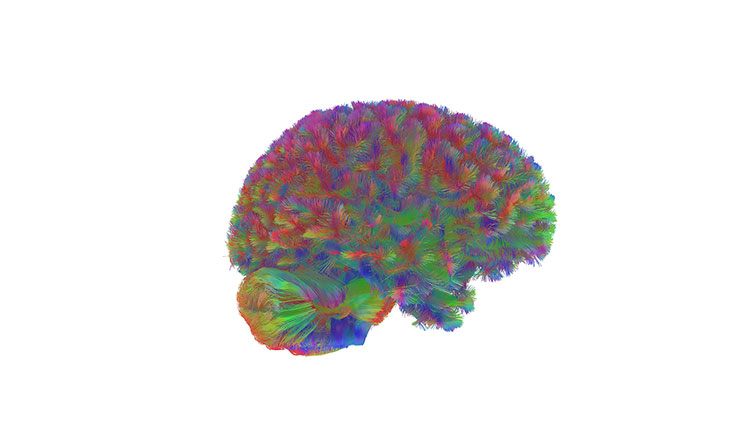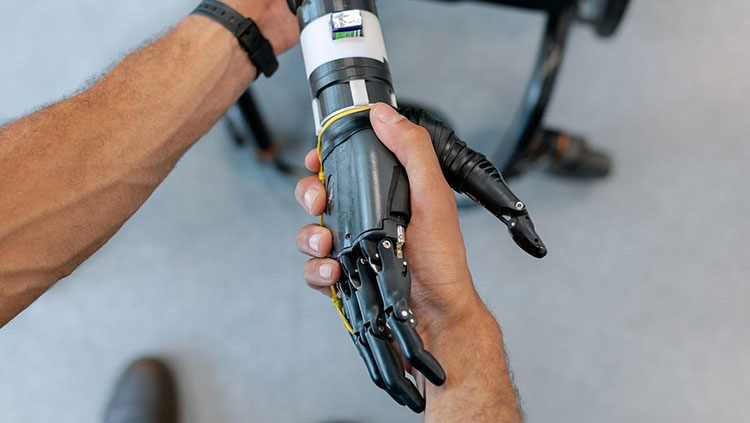ICYMI: How Ketamine Alters Consciousness
- Published24 Sep 2020
- Author Alexis Wnuk
- Source BrainFacts/SfN

These were the top neuroscience stories for the week of September 14, 2020.
How Ketamine Alters Consciousness
The drug ketamine can disconnect people from their thoughts, body, and surroundings. The dissociative experience arises from an aberrant brain rhythm, researchers reported September 16 in Nature. In mice, ketamine triggered unique oscillations in electrical activity in the retrosplenial cortex, an area involved in memory and navigation. The cells fired three times per second and were out of sync with most parts of the brain. Using optogenetics, the researchers activated neurons in the retrosplenial cortex where the same brain rhythms emerged. What’s more, the mice behaved as though they were on ketamine. When monitoring a patient with epilepsy who experienced dissociation, the researchers observed a pattern of electrical activity in the posteromedial cortex that was similar to that found in the mouse brains.
Related: Listening to Ketamine
Read more: Scientists Say A Mind-Bending Rhythm In The Brain Can Act Like Ketamine (NPR)
Sleep Patterns Show an Abrupt Shift Around Age 2
Sleep helps us reorganize neural circuits to consolidate memories, repair cells, and flush out metabolic waste. Now, a team of researchers has found sleep’s primary function changes as we develop, showing an abrupt shift when children are about two and a half years old. As reported September 18 in Science Advances, the team compiled datasets from more than 60 studies and developed a mathematical model that could explain how sleep changes over the lifespan. Infants spent a larger percentage of time in REM sleep – the stage of sleep where dreaming occurs and where scientists think most memory consolidation takes place – than children and adults. But REM sleep declined sharply around age two and a half. At this point, children begin to spend more time in non-REM sleep, the stage where the brain prioritizes repair and maintenance.
Related: What Happens While You Sleep?
Read more: Researchers Say the Purpose of Sleep Shifts During the ‘Terrible Twos’ (Smithsonian)
Fatigued Neurons Skew Our Perception of Time
When neurons in a certain region of the brain become fatigued, we may perceive time as moving faster or slower, researchers reported September 14 in JNeurosci. Previous studies demonstrated damage to this region, called the supramarginal gyrus, impaired people’s ability to perceive time. For the new study, the researchers scanned people’s brains as they watched a gray circle flash repeatedly on a screen for the same length of time. For some participants, the circle appeared for just 250 milliseconds, and for others, it stuck around a little longer: 750 milliseconds. Then, a final circle flashed on the screen. People who saw the initial series of circles for 250 milliseconds each time overestimated how long the final circle appeared. The other group underestimated it. Greater time distortions correlated with greater reductions in activity in the supramarginal gyrus. The researchers think the repeated presentation of the gray circle fatigued cells in the supramarginal gyrus, skewing the perception of time in the final test.
Big picture: How we perceive time is still a bit of a mystery. Previous studies have found neurons within the brain’s entorhinal cortex encode the passage of time.
Read more: Our sense of time may be warped because parts of our brain get tired (New Scientist)
CONTENT PROVIDED BY
BrainFacts/SfN
Also In Neuroscience in the News
Trending
Popular articles on BrainFacts.org








.jpg)









